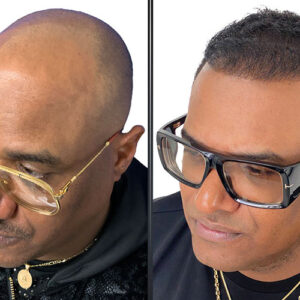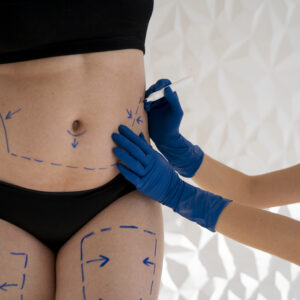Description
Familiarity with treatment
The breast implant removal procedure involves the surgical removal of breast implants that were previously placed for breast augmentation or reconstruction. Here is a general overview of the procedure:
Consultation: The process begins with a consultation with a qualified plastic surgeon. During this consultation, you will discuss your goals, concerns, and reasons for wanting the implants removed. The surgeon will evaluate your individual case and provide recommendations based on your specific needs.
Preparation: Before the procedure, you may be advised to undergo certain preoperative tests and evaluations to ensure your suitability for surgery. Your surgeon will provide instructions on any necessary preparations, such as fasting before the procedure.
Anesthesia: Breast implant removal surgery is typically performed under general anesthesia or intravenous sedation. Your surgeon and anesthesiologist will determine the best option for you based on your medical history and individual circumstances.
Incision Placement: The surgeon will make incisions to access the breast implants. The incisions can be made along the lower fold of the breast (inframammary fold) or around or below the areola. The choice of incision placement depends on factors such as the type of implants, the amount of scar tissue, and the desired outcome.
Implant Removal: The surgeon will carefully remove the breast implants. In some cases, the surgeon may also remove any scar tissue that has formed around the implants. The extent of scar tissue removal will depend on individual circumstances and the surgeon’s judgment.
Breast Lift (Optional): If desired or recommended, a breast lift (mastopexy) may be performed simultaneously with the implant removal. A breast lift involves removing excess skin, reshaping the breast tissue, and repositioning the nipple and areola to achieve a more lifted and youthful appearance.
Closure and Dressing: Once the implants have been removed and any necessary adjustments made, the surgeon will close the incisions using sutures. Dressings or bandages may be applied to protect the incision sites.
Recovery and Follow-up: After the procedure, you will be taken to a recovery area where you will be monitored until you are ready to be discharged. Your surgeon will provide specific postoperative instructions, including guidelines for pain management, wound care, activity restrictions, and follow-up appointments.
Who is it suitable for?
Breast implant removal is suitable for various individuals depending on their specific circumstances and reasons for wanting the implants removed. Here are some factors that may make someone a candidate for breast implant removal:
Change in Breast Appearance: Some individuals may opt for breast implant removal because the shape of their breasts has changed since their breast augmentation. This could be due to factors such as weight fluctuations, pregnancy, or aging 1.
Capsular Contracture: Capsular contracture occurs when scar tissue hardens around the breast implants, causing pain, discomfort, or changes in breast appearance. In such cases, breast implant removal may be medically necessary to address the issue 1.
Implant-related Complications: Breast implant removal may be necessary if individuals experience complications such as frequent infections, severe scarring that interferes with mammograms, persistent pain, or swelling after the initial surgery 2.
Desire for Explantation: Some individuals may simply decide to have their breast implants removed for personal reasons, whether it’s due to a change in preference, lifestyle, or a desire to return to their natural breast appearance.
Who is it not suitable for?
Breast implant removal may not be suitable for everyone. Here are some factors that may make someone not a candidate for breast implant removal:
Unrealistic Expectations: If an individual has unrealistic expectations about the outcome of breast implant removal, it may not be suitable for them. It’s important to have a clear understanding of the potential results and limitations of the procedure.
Underlying Health Issues: Certain underlying health issues may make breast implant removal risky or unsuitable. It’s important to discuss your medical history with a qualified plastic surgeon to determine if the procedure is safe for you.
Pregnancy or Future Pregnancy Plans: It is generally not recommended to undergo breast implant removal if you are currently pregnant or planning to become pregnant in the near future. Pregnancy can significantly affect breast shape and size, so it’s advisable to wait until after completing your family before considering breast implant removal.
Lack of Medical Necessity: If there are no medical reasons or complications associated with the breast implants, and an individual simply wants them removed for personal reasons, it may not be considered medically necessary. In such cases, the decision to remove breast implants would be based on personal preference rather than a medical indication.
Financial Considerations: Breast implant removal for purely cosmetic reasons is typically not covered by insurance. If an individual is unable or unwilling to bear the cost of the procedure, it may not be suitable for them.
Advantages
Breast implant removal offers several advantages for individuals who choose to undergo the procedure. Here are some of the benefits associated with breast implant removal:
Improved Comfort: Breast implant removal can alleviate discomfort or pain that may be associated with the presence of breast implants. This includes relief from issues such as shoulder, back, or neck pain caused by the weight of the implants.
Restoring Natural Appearance: Some individuals may choose breast implant removal to return to their natural breast appearance. This can be particularly beneficial for those who have experienced changes in breast shape or size over time due to factors like weight fluctuations, pregnancy, or aging.
Addressing Complications: Breast implant removal can address complications that may arise from breast implants, such as capsular contracture (hardening of scar tissue around the implant), implant rupture, or implant-related infections. Removing the implants and any associated scar tissue can help alleviate these issues.
Avoiding Future Implant-Related Concerns: Breast implants are not meant to last a lifetime, and they may require replacement or removal after a certain period. By choosing breast implant removal, individuals can avoid potential future concerns associated with aging or the need for implant replacement.
Clearer Mammogram Results: Breast implants can sometimes interfere with mammogram results, making it more challenging to detect breast abnormalities. Removing the implants can improve the accuracy of mammograms, which is particularly important for individuals with a family history of breast cancer.
Complications
Breast implant removal, like any surgical procedure, carries potential risks and complications. Here are some of the complications that may be associated with breast implant removal:
Anesthesia Risks: Anesthesia carries inherent risks, including allergic reactions, respiratory issues, and adverse reactions to medications. Your anesthesiologist will discuss these risks with you before the procedure.
Bleeding and Hematoma: Excessive bleeding during or after the surgery can lead to the formation of a hematoma, which is a collection of blood that may require drainage.
Infection: Infection is a potential risk with any surgical procedure. Your surgeon will take precautions to minimize the risk of infection, but it can still occur. In some cases, the removal of the implant may be necessary to treat the infection.
Persistent Pain: Some individuals may experience ongoing pain after breast implant removal. This can be due to various factors, such as nerve damage, scar tissue, or other underlying issues.
Changes in Breast Appearance: Breast implant removal can result in changes in breast shape, size, or symmetry. The extent of these changes can vary depending on individual factors and the condition of the breast tissue.
Scarring: Scarring is a natural part of the healing process after surgery. The appearance of scars can vary from person to person and may fade over time, but they may still be visible.
Changes in Nipple Sensation: Breast implant removal can potentially affect nipple sensation. Some individuals may experience temporary or permanent changes in nipple sensitivity.
Seroma Formation: Seroma refers to the accumulation of fluid in the surgical area. It can occur after breast implant removal and may require drainage.
Implant-related Complications: In some cases, complications associated with the breast implants themselves, such as implant rupture or leakage, may be encountered during the removal procedure.
preoperative care
Before undergoing breast implant removal surgery, there are several important aspects of preoperative care to consider. Here is an overview of the preoperative care process:
Consultation and Evaluation: The first step is to schedule a consultation with a qualified plastic surgeon. During this consultation, you will discuss your goals, concerns, and reasons for wanting the implants removed. The surgeon will evaluate your individual case, including the condition of your breast tissue and any potential complications.
Medical Evaluation: Your surgeon may require you to undergo a medical evaluation to ensure that you are in good health and suitable for surgery. This may involve blood tests, imaging scans, or other diagnostic procedures.
Discussion of Expectations: It’s important to have a thorough discussion with your surgeon about your expectations for the procedure. This includes discussing the desired outcome, potential changes in breast appearance, and any concerns or questions you may have.
Review of Risks and Complications: Your surgeon will explain the potential risks and complications associated with breast implant removal surgery. This will help you make an informed decision and understand the possible outcomes.
Preoperative Instructions: Your surgeon will provide specific instructions to follow before the surgery. These instructions may include guidelines for fasting before the procedure, discontinuing certain medications or supplements that can increase the risk of bleeding, and arranging for transportation to and from the surgical facility.
Smoking and Alcohol Cessation: If you smoke or consume alcohol, your surgeon may advise you to stop these habits before the surgery. Smoking and alcohol can interfere with the healing process and increase the risk of complications.
Arranging Support: It’s important to arrange for someone to accompany you to the surgery and stay with you for at least the first night following the procedure. They can provide support and assistance during the initial recovery period.
Final Consultation: Before the surgery, you will have a final consultation with your surgeon to address any remaining questions or concerns. This is an opportunity to ensure that you are fully prepared for the procedure.
Postoperative care
After undergoing breast implant removal surgery, proper postoperative care is essential to promote healing and minimize complications. Here are some general guidelines for postoperative care:
Follow Surgeon’s Instructions: It is important to carefully follow the postoperative instructions provided by your plastic surgeon. These instructions may include guidelines for dressing changes, medication usage, activity restrictions, and follow-up appointments.
Pain Management: You may experience some discomfort or pain after the surgery. Your surgeon may prescribe pain medications or recommend over-the-counter pain relievers to help manage any discomfort. Take the medications as directed.
Wound Care: Your surgeon will provide instructions on how to care for your incisions and dressings. It is important to keep the surgical area clean and dry to minimize the risk of infection. Follow the guidelines for dressing changes and any wound care products recommended by your surgeon.
Activity Restrictions: Your surgeon will provide specific guidelines regarding physical activity and restrictions. It is important to avoid strenuous activities, heavy lifting, and exercise for the recommended duration to allow for proper healing.
Compression Garments: Your surgeon may recommend wearing a compression garment or surgical bra to provide support to the breasts and minimize swelling. Follow your surgeon’s instructions on when and how to wear these garments.
Monitoring for Complications: Keep an eye out for any signs of infection, excessive bleeding, or other complications. Contact your surgeon immediately if you experience severe pain, excessive swelling, redness, or drainage from the incision site.
Follow-Up Appointments: Attend all scheduled follow-up appointments with your surgeon. These appointments allow them to monitor your healing progress, remove any sutures or drains if necessary, and address any concerns or questions you may have.
Emotional Support: It is normal to experience a range of emotions after breast implant removal. Seek emotional support from friends, family, or support groups to help you navigate any feelings of anxiety, sadness, or body image concerns.





Reviews
There are no reviews yet.